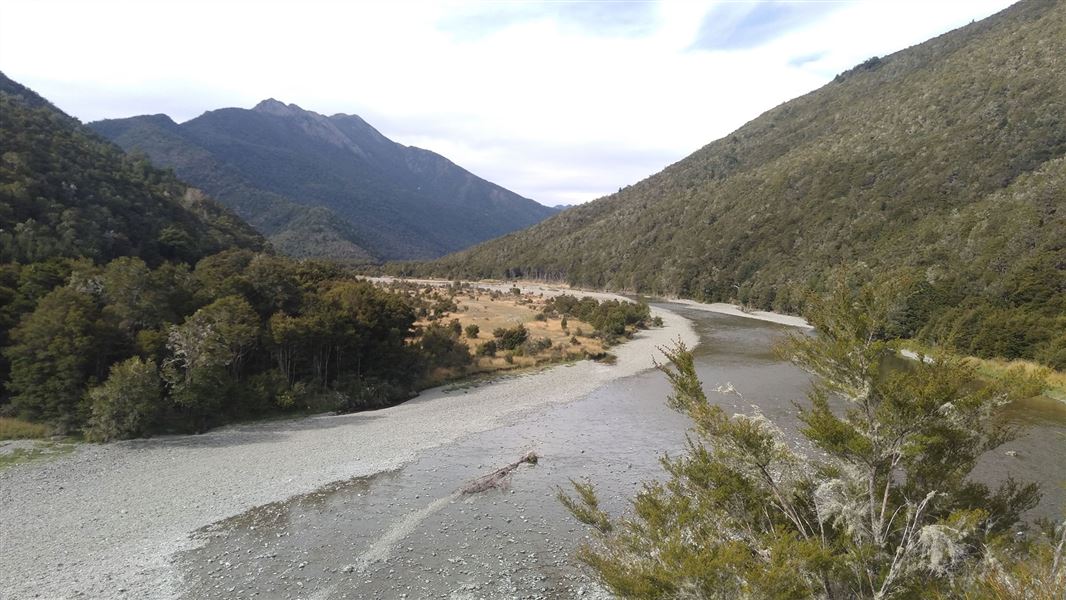The park is between Nelson and Blenheim in the South Island of New Zealand, both of which are gateways to the park.
Roads from both lead to carparks within the park and to a network of tracks.
Bus services through both regions can also drop people at a number of points from which visitors can make their way into the park. There are also companies in most of the local towns that offer on-demand shuttle services.
Access roads into the park
Many of the access roads into the park are through exotic forest plantations. Forestry contractors could be working in an area requiring the road to be temporarily closed or limiting access to just weekends.
View a list of which roads are open or closed.
Public Access Easements (PAE)
Public Access Easements (PAE) were established over Crown Forest Licence Areas in 1990.
The PAEs provide access to the public on foot, horseback, bicycle, motorcycle or light vehicle. One Forty One (OFO), as the occupier of the land, may close or restrict the PAE access:
- during hours of darkness, for reasons relating to the safety of those using the access and for those working in the forestland
- for reasons relating to the protection of the forest land.
There is no requirement for OFO to maintain the roads under the easement documents. New Zealand - One Forty One.
Access from the Northbank Road includes 6 PAEs which go through OFO forest:
- PAE No 1 – Goulter Road
- PAE No 2 – Top Valley
- PAE No 3 – Pine Valley
- PAE No 4 – Bartletts Block
- PAE No 5 – Davies Road
- PAE No 6 – Storeys Creek
For enquiries regarding the PAEs listed above please contact OFO directly at onefortyone.com/contact-us.
If you going to make overnight trips in the park make sure you are properly equipped and well prepared.
Make sure your group has a capable leader and that everyone is carrying a sleeping bag, cooking utensils, sufficient high energy food (with some extra for emergencies), a waterproof raincoat and over-trousers, gloves, a hat, and several layers of warm (wool or fleece) clothing.
Watch out for wasps, especially in late summer and autumn.
Weather forecast
Nelson Lakes - thefts from vehicles
Isolated carparks are prone to theft. Don't leave any valuables in your vehicle. A bag storage facility is available at the Rotoiti/Nelson Lakes Visitor Centre.
The Richmond Range, an irregular mountainous ridge with several rocky ‘island’ peaks rising above 1700 m, forms the backbone of the park, separating the north bank tributaries of the Wairau River from other river systems.
A number of lesser ridges lie along the western sector of the park separated by the major west-flowing rivers, the Waimea and Motueka, and the east-flowing Pelorus River.
The park was gazetted on 4 March 1977. It has an area of 166,000 ha and is the second largest forest park in New Zealand. It is named after Mount Richmond (1760 metres), one of the highest peaks in the park. The park forms a backdrop to Nelson City, the Waimea Plains, and surrounding country. In Marlborough, the mountains are a dominant feature of the Wairau and Pelorus Valleys.
Northbank
The northbank of Wairau River provides access to Mt Richmond Forest Park in the South Marlborough area.
The Wairau Valley runs along the Alpine Fault, which has formed the mountainous Richmond Range. The lowland vegetation is mostly mixed beech and podocarp, with tussock grasses and shrubs on sub-alpine ridges. Alpine plants cling to high rock faces. Lake Chalice, created by a slip, is unusual in that its only fish are the native koaro.
The park has an interesting history, particularly of mining (gold and chrome) and timber milling. Maori occupation of the sheltered coastal sites around Nelson and Marlborough is well known.
Maori use of the less accessible backcountry areas was probably limited to the use of tracks around the perimeter and the working of a number of argillite quarries within the park. Argillite is a very hard metamorphosed mudstone used by Maori to make tools and weapons.
Northbank
At different times from the 1860s to the 1930s, gold was panned and mined in this area. European settlers cleared vast areas for farming. To stabilise the eroded soils, pine plantations began in the mid-1960s. Today, access to the forest park is through these plantations.
Whakatū/Nelson Visitor Centre
| Phone: | +64 3 546 9339 |
| Email: | nelsonvc@doc.govt.nz |
| Address: | Millers Acre/Taha o te Awa 1/37 Halifax Street Nelson 7010 |
| Hours: | Visitor centre hours and services |
